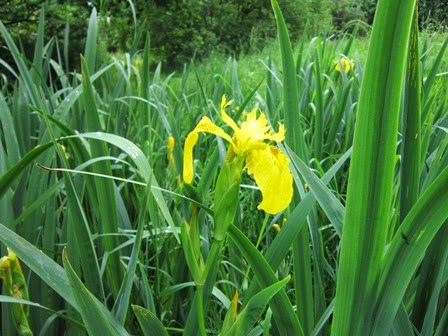Continuing where we left off a couple of weeks ago, today the Environment Trust's volunteers continued walking along the Tolworth Brook from Raeburn Avenue down to the Hogsmill River removing invasive Himalayan balsam as they went. Unfortunately, after a night of heavy rain the water level was a little higher than was convenient, meaning that some over enthusiastic volunteers got wet feet. Still, plenty of balsam was removed, which will reduce the amount of seeds that will be released to travel downstream. The eventual intention is to reduce the volume of seeds produced so that areas downstream on the Hogsmill, such as Elmbridge Meadows and the nature park at the Thames Water Sewage Works will not be reinvaded.
The Tower House boys get to work removing invasive Himalayan balsam from along the Tolworth Brook in Berrylands.
Further downstream at Elmbridge Meadows the dominant nature of the balsam is all too evident. We'll be visiting this site a few times before the plants flower and release their hundreds of seeds.
Along the Tolworth Brook, patches of yellow iris remain unaffected by the balsam invasion.
In an area of woodland along the Tolworth Brook that was coppiced in 2012 and 2013, a speckled wood butterfly enjoys a sunny glade.
Nearby a distinctive tree bumblebee (Bombus hypnorum) was spotted on a hazel leaf.
Sadly, at the Meldone Close car park fly tipping is still taking place, with a china sink dumped in the time that we were in the area. We'll be back to have another clear up later in the year.





















































